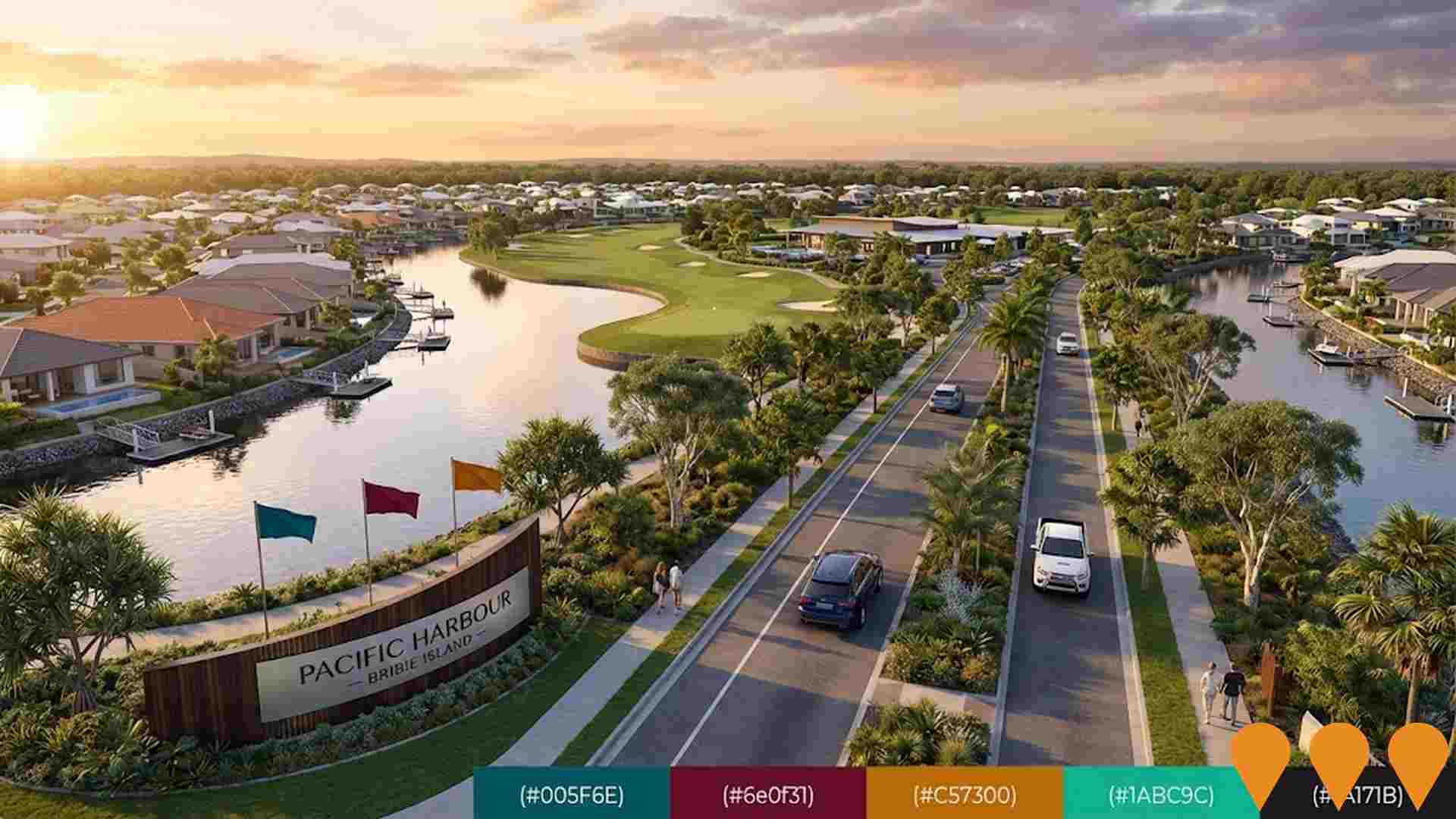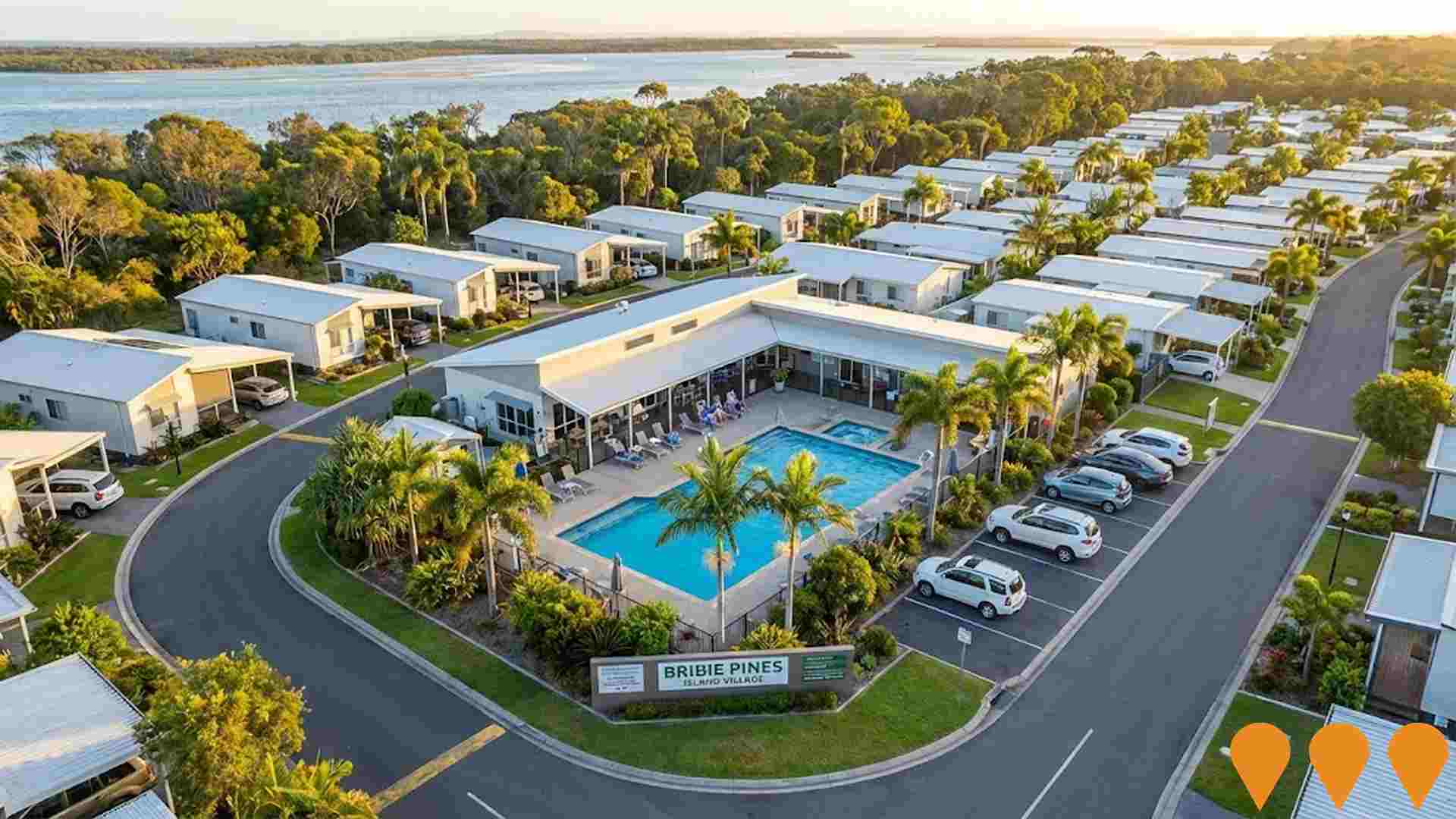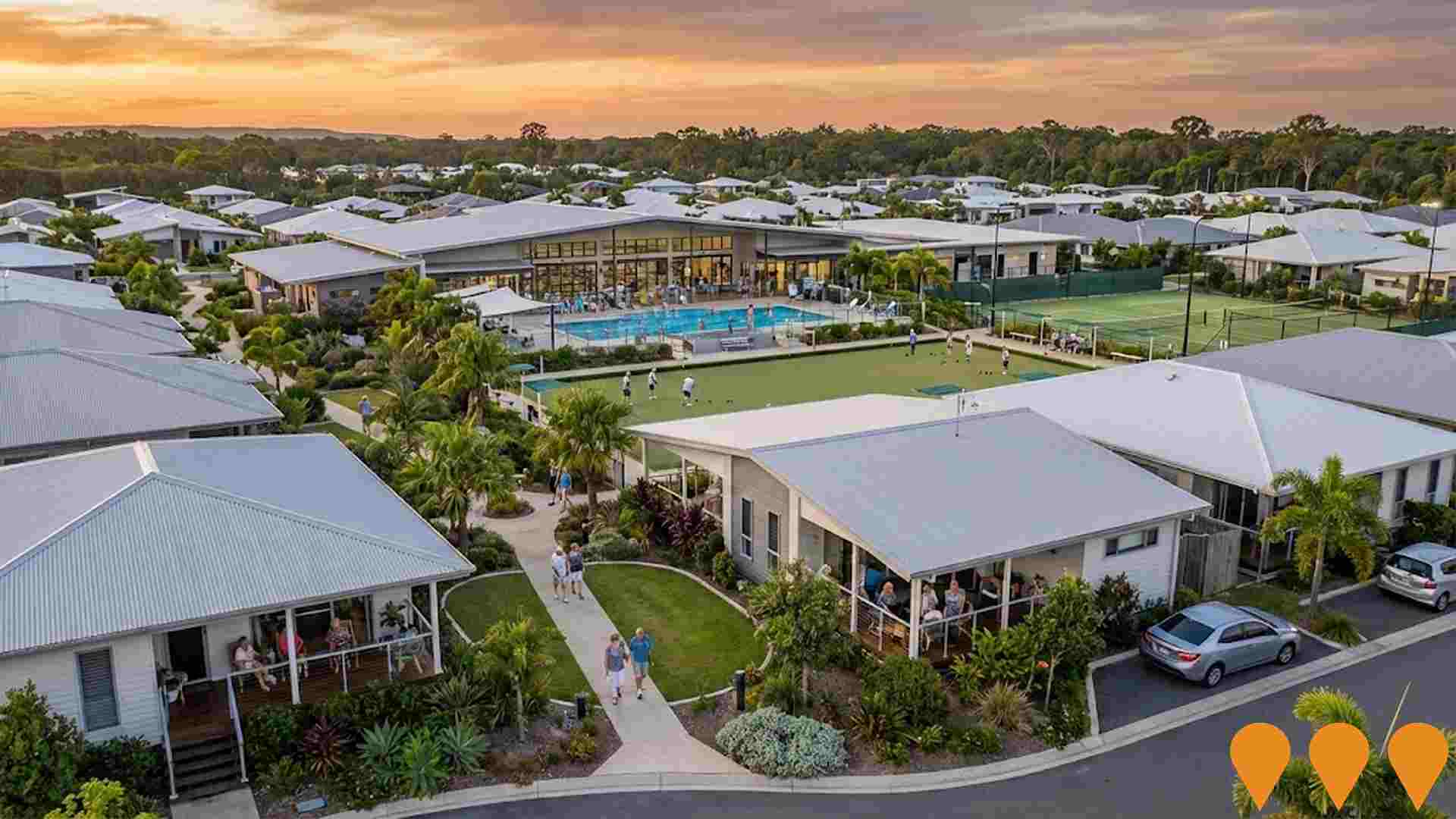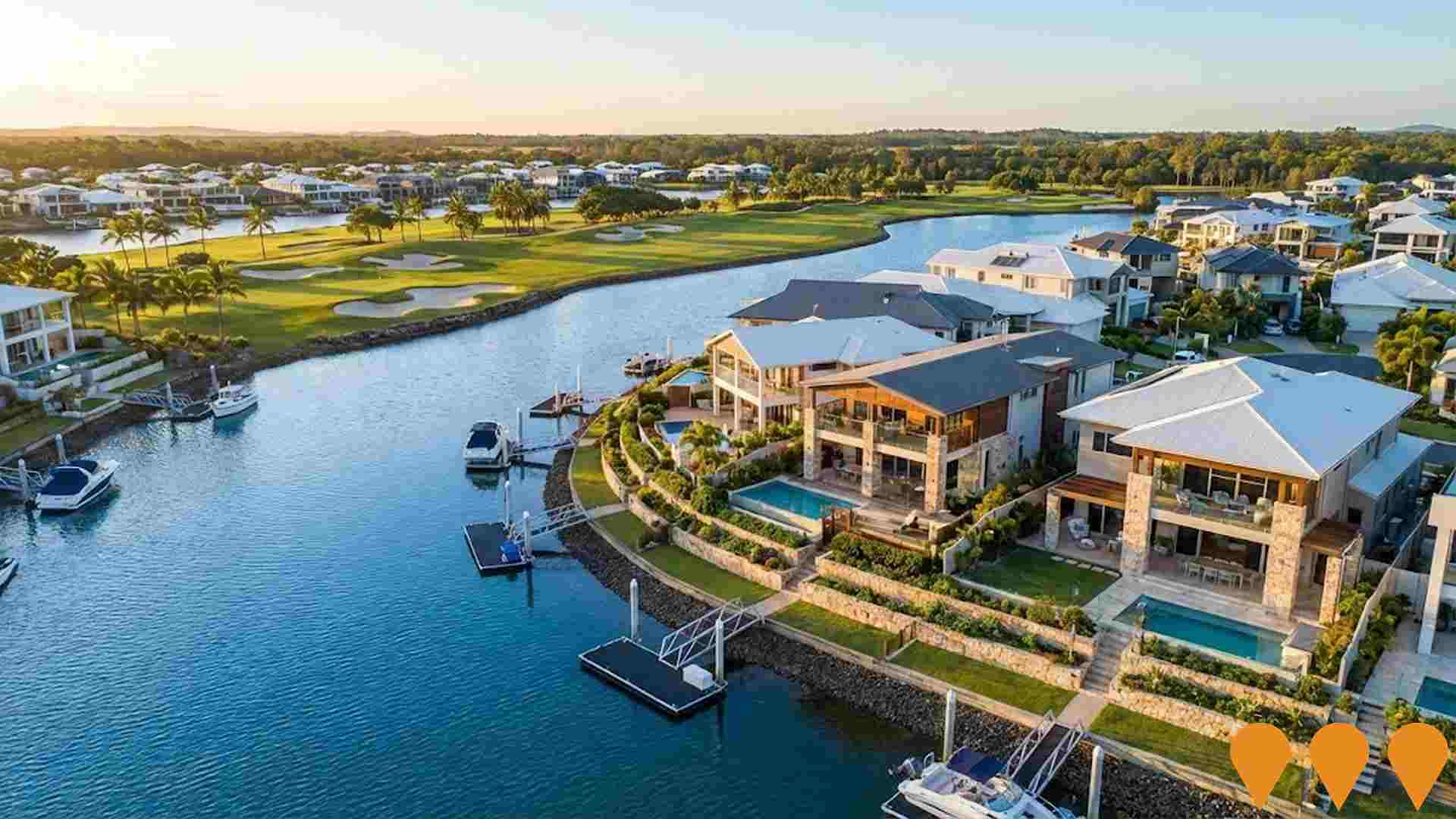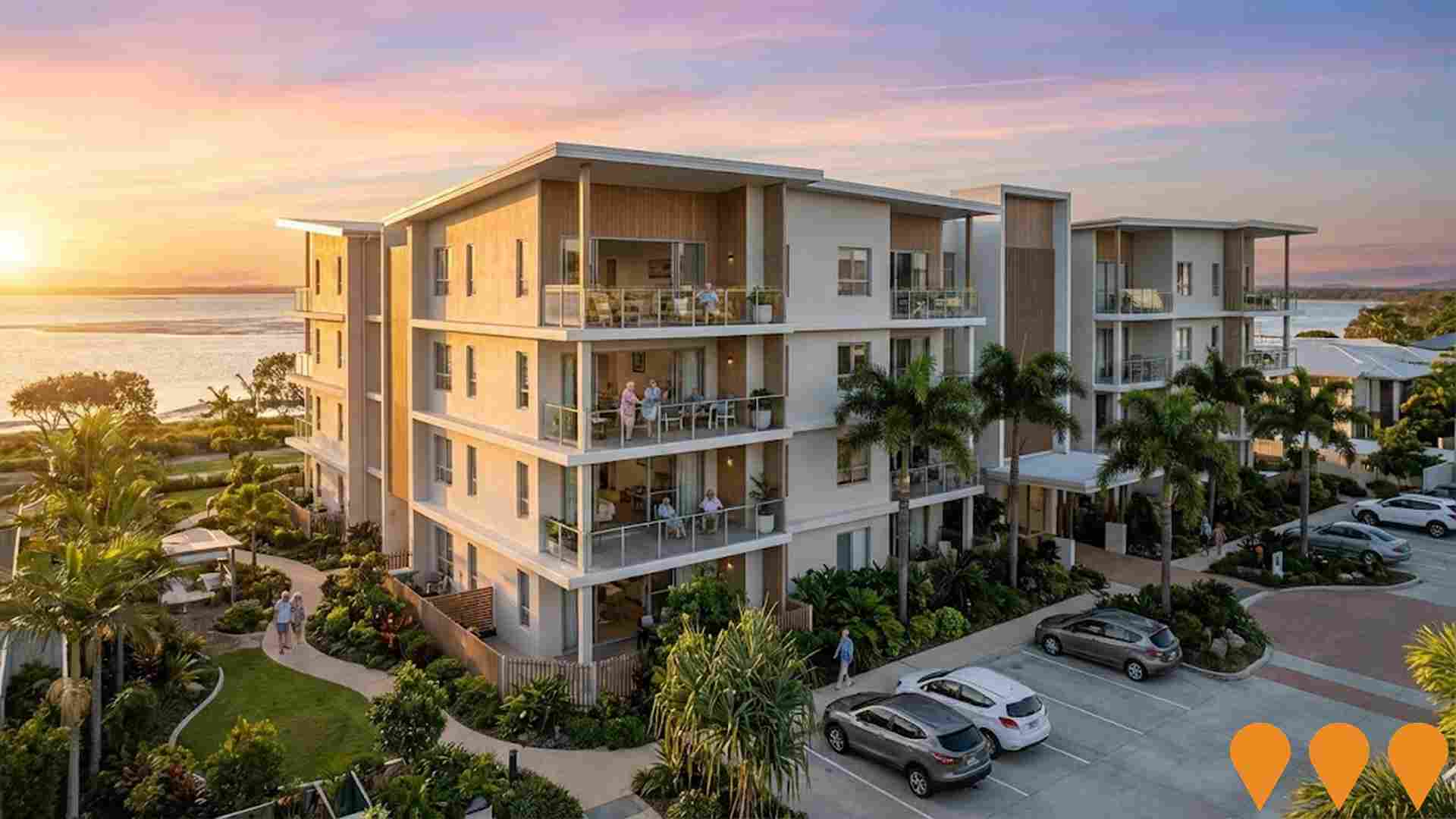Chart Color Schemes
est. as @ -- *
ABS ERP | -- people | --
2021 Census | -- people
Sales Activity
Curious about local property values? Filter the chart to assess the volume and appreciation (including resales) trends and regional comparisons, or scroll to the map below view this information at an individual property level.
Find a Recent Sale
Sales Detail
Population
Population growth drivers in Bribie Island are strong compared to national averages based on AreaSearch's ranking of recent, and medium to long-term trends
Bribie Island's population, as of August 2025, is approximately 22,139, indicating a growth of 1,527 people since the 2021 Census. This increase represents a 7.4% rise from the previous figure of 20,612. The estimated resident population of 22,137 in June 2024 and an additional 293 validated new addresses contribute to this growth. This results in a population density of 152 persons per square kilometer. Over the past decade, Bribie Island has shown resilience with a compound annual growth rate of 1.9%, outperforming its SA3 area. Interstate migration accounted for approximately 79.2% of overall population gains during recent periods.
AreaSearch uses ABS/Geoscience Australia projections for each SA2 area, released in 2024 with a base year of 2022. For areas not covered and years post-2032, Queensland State Government's SA2 area projections from 2023, based on 2021 data, are adopted. These state projections lack age category splits, so AreaSearch applies proportional growth weightings aligned with ABS Greater Capital Region projections released in 2023, based on 2022 data. By 2041, Bribie Island is projected to increase by 2,387 persons, reflecting a total increase of 10.8% over the 17-year period.
Frequently Asked Questions - Population
Development
AreaSearch assessment of residential approval activity sees Bribie Island among the top 30% of areas assessed nationwide
Bribie Island has seen approximately 136 new homes approved annually over the past five financial years, totalling 683 homes. As of FY26, there have been 7 approvals recorded so far. On average, 3.4 new residents arrive per year for each dwelling constructed between FY21 and FY25, indicating a significant gap between demand and supply which can put upward pressure on prices and increase competition among buyers. New properties are constructed at an average expected cost of $513,000.
This financial year has seen $8.1 million in commercial development approvals recorded, suggesting the area's residential character. Relative to Greater Brisbane, Bribie Island maintains similar development levels per person, consistent with the broader area's market balance. However, building activity has slowed in recent years.
New development consists of 97.0% standalone homes and 3.0% townhouses or apartments, preserving the area's low density nature and attracting space-seeking buyers. This is despite current patterns suggesting a higher proportion of detached housing (73.0% at Census). The estimated count of 490 people per dwelling approval reflects Bribie Island's quiet development environment. Looking ahead, Bribie Island is expected to grow by 2,385 residents through to 2041. Based on current development patterns, new housing supply should readily meet demand, offering good conditions for buyers and potentially facilitating population growth beyond current projections.
Frequently Asked Questions - Development
Infrastructure
Bribie Island has moderate levels of nearby infrastructure activity, ranking in the 44thth percentile nationally
Changes to local infrastructure significantly impact an area's performance. AreaSearch has identified 15 projects that could affect the region. Notable ones include Sunderland Drive Residential Estate (Pacific Harbour), Bribie Island Retiree Resort (Sundale), Bribie Island Central Coles Precinct Redevelopment, and Pacific Harbour Bribie Island. The following list details those most likely to be relevant.
Professional plan users can use the search below to filter and access additional projects.
INFRASTRUCTURE SEARCH
 Denotes AI-based impression for illustrative purposes only, not to be taken as definitive under any circumstances. Please follow links and conduct other investigations from the project's source for actual imagery. Developers and project owners wishing us to use original imagery please Contact Us and we will do so.
Denotes AI-based impression for illustrative purposes only, not to be taken as definitive under any circumstances. Please follow links and conduct other investigations from the project's source for actual imagery. Developers and project owners wishing us to use original imagery please Contact Us and we will do so.
Frequently Asked Questions - Infrastructure
Queensland Energy Roadmap 2025
The Queensland Energy Roadmap 2025 is the successor to the Queensland Energy and Jobs Plan. It is a five-year plan for Queensland's energy system, focused on delivering affordable, reliable, and sustainable energy, with a greater emphasis on private sector investment. Key elements include the $1.6 billion Electricity Maintenance Guarantee to keep existing assets reliable, a $400 million investment to drive private-sector development in renewables (solar, hydro) and storage, and a new focus on gas generation (at least 2.6 GW by 2035) for system reliability. The plan formally repeals the previous renewable energy targets while maintaining a net-zero by 2050 commitment. It also continues major transmission projects like CopperString's Eastern Link. The associated Energy Roadmap Amendment Bill 2025 is currently before Parliament.

Stockland Aura
A $5.3 billion master-planned community (also known as Caloundra South Priority Development Area) being developed over 30 years. The project spans 2,400 hectares and will feature 20,000 dwellings housing approximately 50,000 residents upon completion. It includes four suburbs (Baringa, Nirimba, Banya, and Gagalba), a major city centre, district and neighbourhood centres, 20 schools/learning centres, and 200km of cycleways. As of 2025, it is home to over 14,000 residents.

Queensland Energy and Jobs Plan - South East Queensland
The Queensland Energy and Jobs Plan (QEJP) is the state's 30-year roadmap to deliver a publicly-owned renewable energy future for Queensland. In South East Queensland the plan drives new renewable generation zones, large-scale long-duration storage (including the flagship 2,000 MW / 24 GWh Borumba Pumped Hydro Project), and the CopperString 2032 and SuperGrid transmission programs led by Powerlink. As of December 2025, the Borumba Pumped Hydro EIS is in public exhibition (closing early 2026), multiple Renewable Energy Zones are designated, and the first SuperGrid projects are in SEQ are in detailed planning and early procurement. The plan is legislated under the Energy (Renewable Transformation and Jobs) Act 2024.
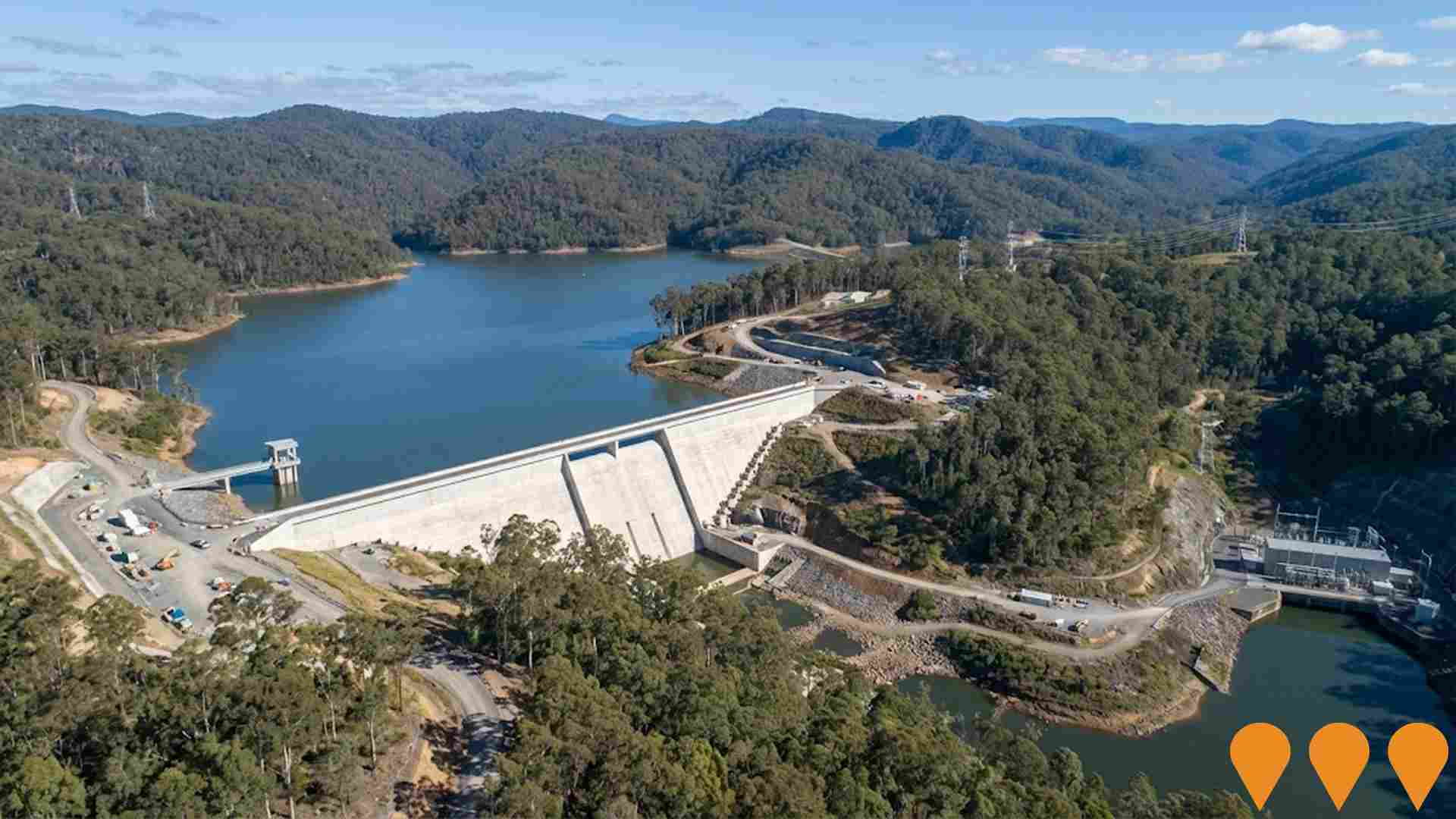
Bribie Island Central Coles Precinct Redevelopment
Proposed expansion and refresh of the existing Bribie Island Central (formerly Bribie Island Shopping Centre) neighbourhood centre. The project, which is anchored by Coles, includes additional specialty retail, medical and a potential small-format supermarket. Development Application DA-2023-380/A was lodged with Moreton Bay Regional Council.
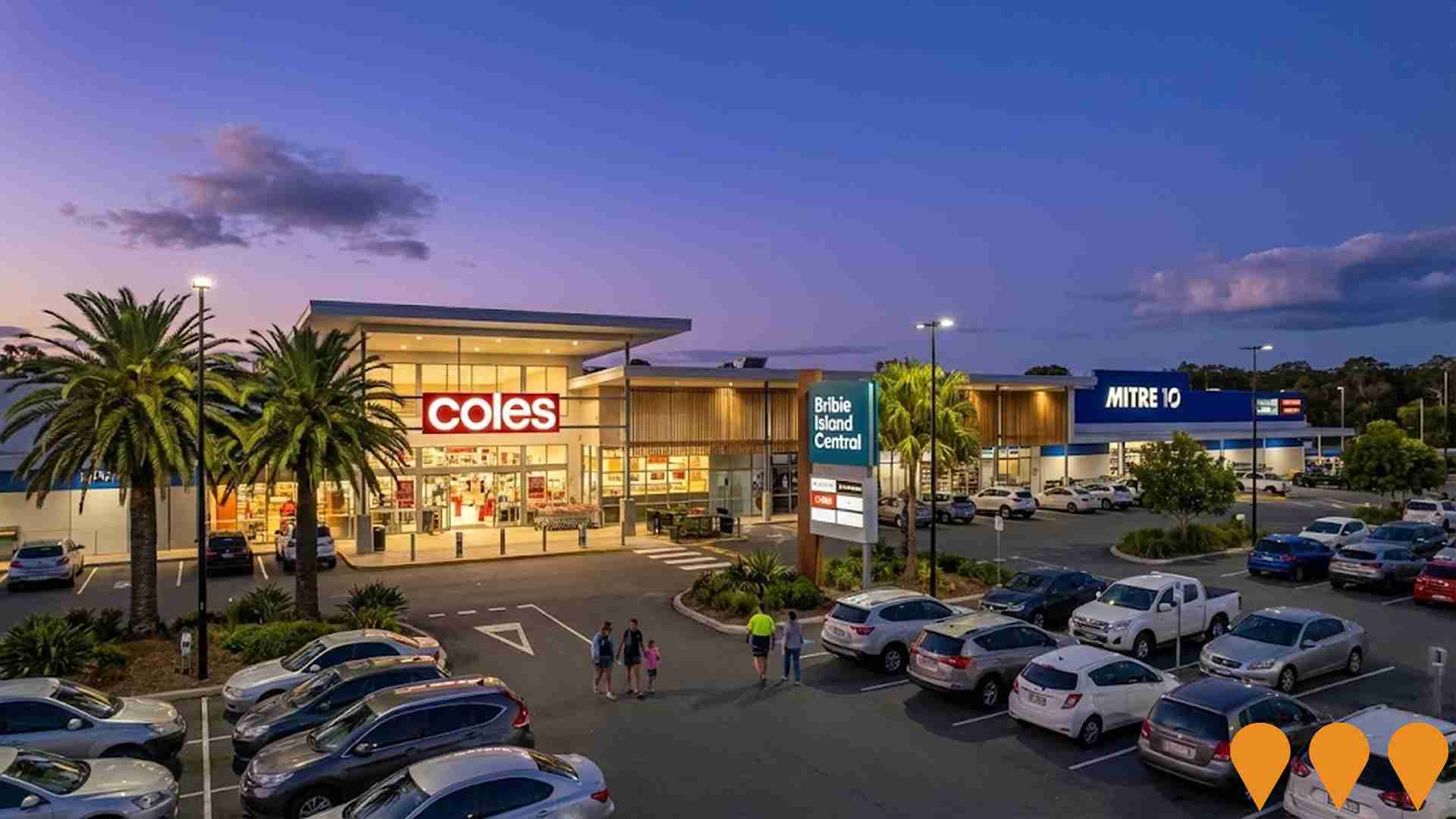
Moreton Bay Rail Link Stage 2
Proposed extension of the Redcliffe Peninsula Line (formerly Moreton Bay Rail Link) from Kippa-Ring to Bribie Island. While the first stage to Kippa-Ring was completed in 2016, this extension remains a long-term strategic proposal to connect Sandstone Point and Bribie Island to the SEQ rail network. Current Queensland Government priorities in the corridor focus on the $700 million duplication of the Bribie Island Road Bridge and upgrades to Caboolture-Bribie Island Road to improve immediate transport capacity.
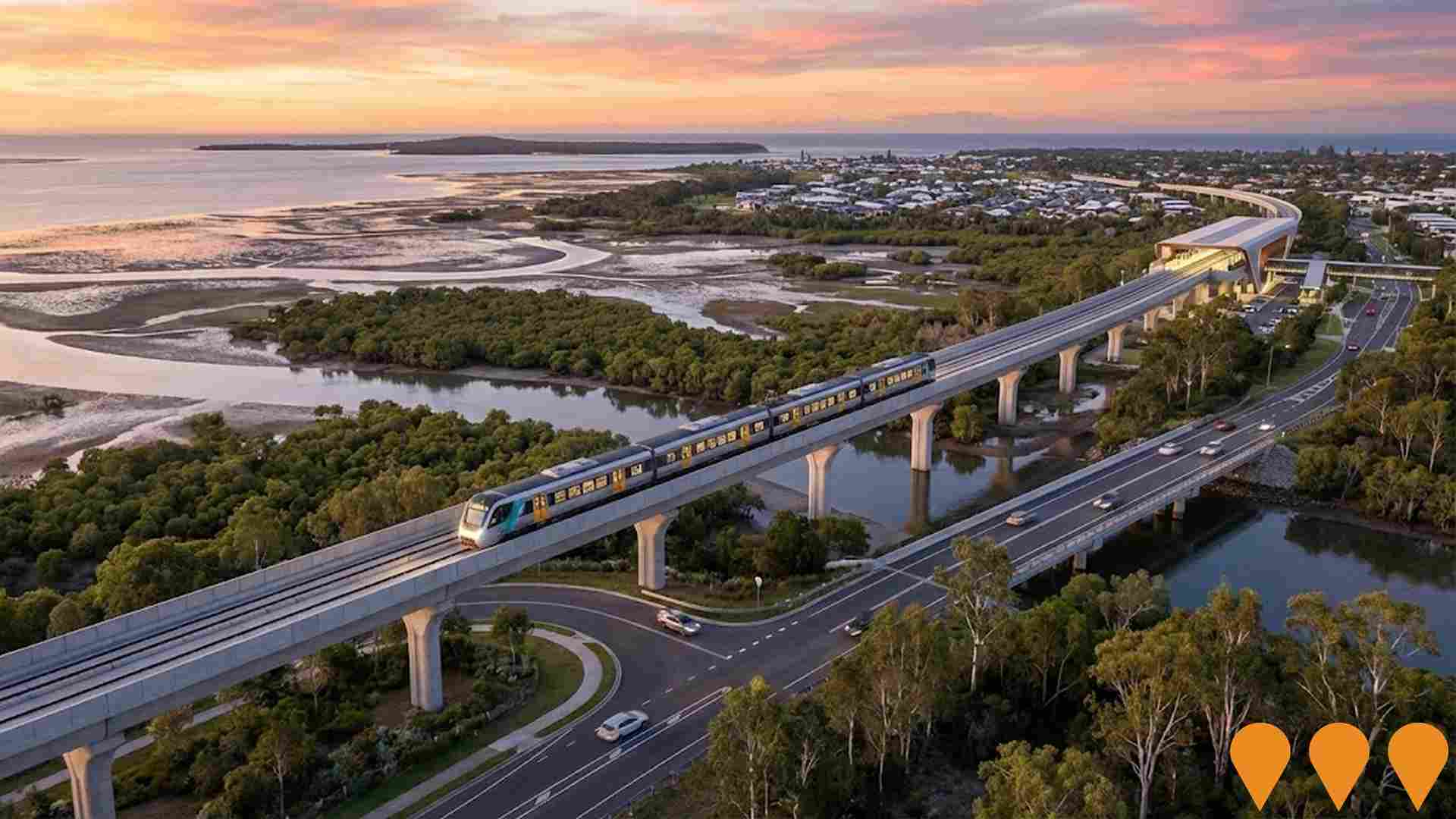
Bongaree Village Shopping Centre Expansion
Council led upgrade and expansion of the Bongaree Village Shopping Precinct on Bribie Island, delivering additional small format retail tenancies, upgraded streetscape and public realm, improved pedestrian links and foreshore connections, and reconfigured parking as part of the Bongaree Village master plan and wider investment in the City of Moreton Bay coastal villages.
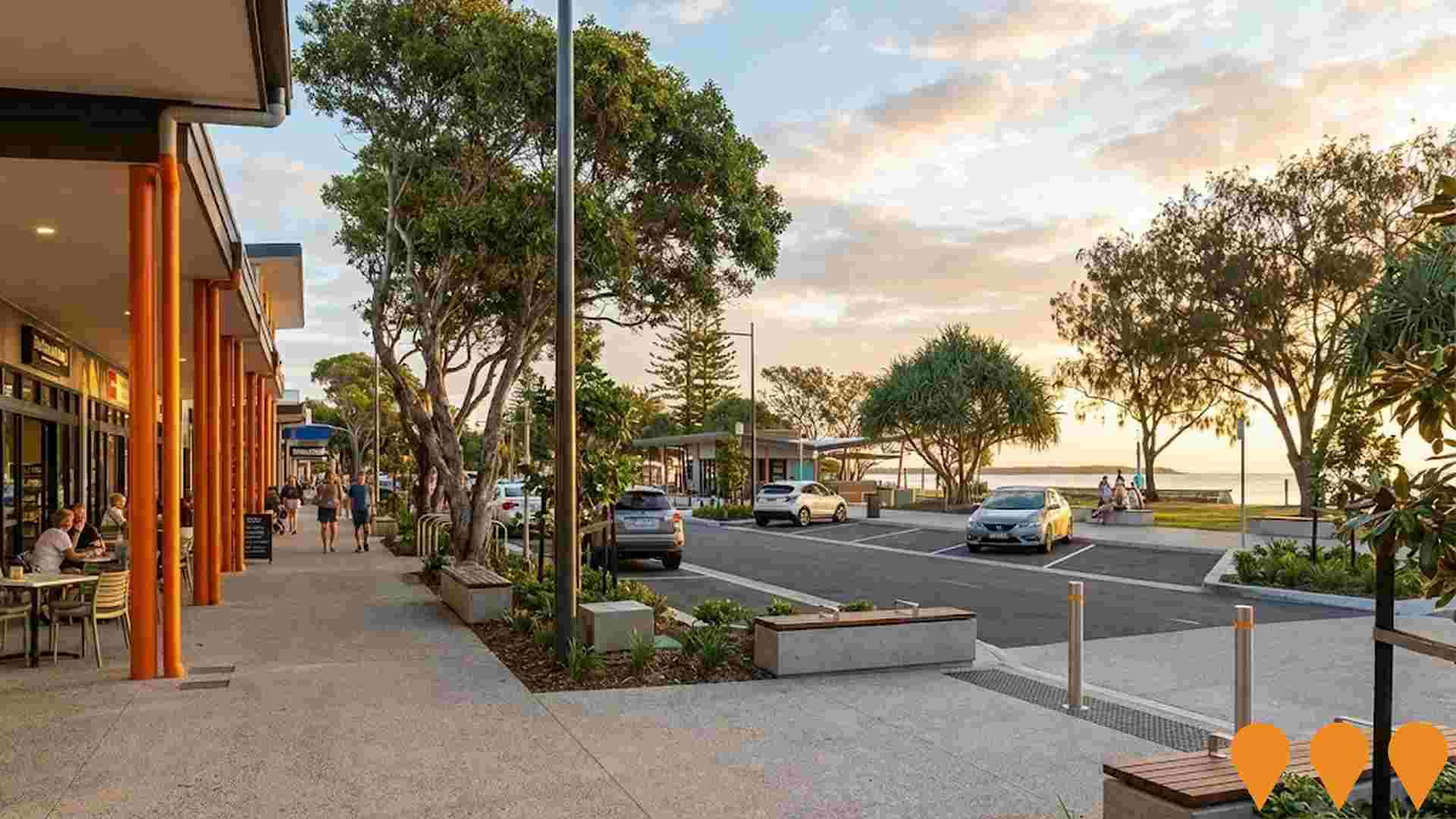
North Brisbane Bruce Highway Western Alternative (Moreton Motorway)
Queensland Department of Transport and Main Roads (TMR) is progressing planning and corridor protection for the ~50-60 km future Moreton Motorway, a new transport corridor west of the Bruce Highway between Beerburrum and Bald Hills. The project will relieve congestion and support growth in Moreton Bay and north Brisbane. Stages 1 (Moodlu to Moorina) and 2 (Moorina to Narangba) are protected as future state-controlled road. Stage 3 (Narangba to Bald Hills) is in early planning. Stage 4 (Beerburrum to Moodlu) community consultation closed 2 June 2025 ahead of corridor protection expected later in 2025. Construction is more than a decade away and subject to future funding.

Solana Bribie Island Lifestyle Resort
Large-scale over-50s land lease community with 320 independent living units, a Livewell Centre featuring a clubhouse, indoor and outdoor pools, bowling green, and other resort facilities. The resort is fully tenanted and homes are sold out, with resales only.

Employment
AreaSearch analysis indicates Bribie Island maintains employment conditions that align with national benchmarks
Bribie Island's workforce is balanced across white and blue collar jobs with varied sector representation. The unemployment rate was 3.7% as of June 2025, lower than Greater Brisbane's 4.1%.
Employment grew by 11.3% in the past year. There were 7,326 residents employed in June 2025, with a workforce participation rate of 34.5%, significantly below Greater Brisbane's 64.5%. Key employment industries include health care & social assistance, construction, and retail trade. Construction has notable concentration, employing 1.4 times the regional average.
Professional & technical services employed 5.7% of local workers, lower than Greater Brisbane's 8.9%. Employment opportunities locally may be limited, as suggested by Census data comparing working population to resident population. Between June 2024 and June 2025, employment increased by 11.3%, labour force by 8.3%, reducing the unemployment rate by 2.6 percentage points. In comparison, Greater Brisbane had employment growth of 4.4% and a 0.4 percentage point drop in unemployment. Jobs and Skills Australia's national employment forecasts from May 2025 project overall growth of 6.6% over five years and 13.7% over ten years. Applying these projections to Bribie Island's employment mix suggests local growth of approximately 6.5% over five years and 13.5% over ten years, though these are simple extrapolations for illustrative purposes only.
Frequently Asked Questions - Employment
Income
Income metrics place the area in the bottom 10% of locations nationally according to AreaSearch analysis
Bribie Island's median income among taxpayers was $40,505 in financial year 2022. The average income stood at $55,358 during the same period. In comparison, Greater Brisbane had a median income of $55,645 and an average income of $70,520. By September 2025, estimated median income would be approximately $46,172, and average income would be around $63,103, based on Wage Price Index growth of 13.99% since financial year 2022. According to the 2021 Census, incomes in Bribie Island fall between the 2nd and 5th percentiles nationally. The income band of $400-$799 captures 33.1% of the community (7,328 individuals), differing from surrounding regions where the $1,500-$2,999 band dominates at 33.3%. This indicates that 41.5% of residents earn less than $800 per week, suggesting constrained household budgets. Housing affordability pressures are severe, with only 83.8% of income remaining after housing costs, ranking at the 4th percentile nationally.
Frequently Asked Questions - Income
Housing
Bribie Island is characterized by a predominantly suburban housing profile, with above-average rates of outright home ownership
Dwelling structure in Bribie Island, as evaluated at the 2016 Census, comprised 73.2% houses and 26.8% other dwellings (semi-detached, apartments, 'other' dwellings), compared to Brisbane metro's 78.8% houses and 21.2% other dwellings. Home ownership in Bribie Island stood at 56.3%, with mortgaged dwellings at 20.2% and rented dwellings at 23.6%. The median monthly mortgage repayment was $1,647, aligning with the Brisbane metro average, while median weekly rent was $335, compared to Brisbane metro's $1,647 and $350 respectively. Nationally, Bribie Island's mortgage repayments were lower than the Australian average of $1,863, and rents were substantially below the national figure of $375.
Frequently Asked Questions - Housing
Household Composition
Bribie Island features high concentrations of lone person households, with a lower-than-average median household size
Family households account for 64.9% of all households, including 12.5% couples with children, 43.4% couples without children, and 8.3% single parent families. Non-family households make up the remaining 35.1%, with lone person households at 32.4% and group households comprising 2.7% of the total. The median household size is 2.0 people, which is smaller than the Greater Brisbane average of 2.1.
Frequently Asked Questions - Households
Local Schools & Education
Bribie Island faces educational challenges, with performance metrics placing it in the bottom quartile of areas assessed nationally
The area has lower university qualification rates at 15.6%, compared to Greater Brisbane's 30.5%. Bachelor degrees are the most common at 10.8%, followed by postgraduate qualifications (2.9%) and graduate diplomas (1.9%). Vocational credentials are held by 40.7% of residents aged 15 and above, with advanced diplomas at 12.0% and certificates at 28.7%. School and university attendance is 17.3%, including secondary education (6.3%), primary education (6.1%), and tertiary education (1.8%).
Bribie Island's three schools have a combined enrollment of 2,456 students, with typical Australian school conditions (ICSEA: 974) and balanced educational opportunities. The area has two primary and one secondary school serving distinct age groups, functioning as an education hub with 11.1 school places per 100 residents, significantly above the regional average of 7.3, attracting students from surrounding communities.
Frequently Asked Questions - Education
Schools Detail
Nearby Services & Amenities
Transport
Transport servicing is low compared to other areas nationally based on assessment of service frequency, route connectivity and accessibility
Transport analysis shows 95 active stops operating within Bribie Island, offering mixed bus services. These are served by five routes, collectively facilitating 858 weekly passenger trips. Transport access is rated good, with residents typically situated 245 meters from the nearest stop.
Service frequency averages 122 trips daily across all routes, resulting in approximately nine weekly trips per individual stop.
Frequently Asked Questions - Transport
Transport Stops Detail
Health
Health performance in Bribie Island is a key challenge with a range of health conditions having marked impacts on both younger and older age cohorts
Bribie Island faces significant health challenges, with various conditions affecting both younger and older residents. Private health cover is low, at approximately 48% of the total population (~10,538 people), compared to the national average of 55.3%.
The most prevalent medical conditions are arthritis (affecting 15.4% of residents) and mental health issues (impacting 8.5%). However, 51.0% of residents report being free from medical ailments, slightly lower than the Greater Brisbane figure of 52.7%. The island has a higher proportion of seniors aged 65 and over, at 50.7% (11,231 people), compared to Greater Brisbane's 44.7%. Despite this, health outcomes among seniors on Bribie Island are better than those in the general population.
Frequently Asked Questions - Health
Cultural Diversity
Bribie Island ranks below the Australian average when compared to other local markets across a number of language and cultural background related metrics
Bribie Island had a cultural diversity score below the average, with 76.7% of its population born in Australia, 89.2% being citizens, and 96.0% speaking English only at home. Christianity was the predominant religion on Bribie Island, accounting for 59.2% of the population, compared to 56.3% across Greater Brisbane. The top three ancestry groups were English (36.0%), Australian (24.6%), and Irish (9.7%).
Notably, Scottish ancestry was slightly overrepresented at 9.6%, Welsh at 0.8%, and German at 4.9%.
Frequently Asked Questions - Diversity
Age
Bribie Island ranks among the oldest 10% of areas nationwide
The median age in Bribie Island is 64 years, significantly higher than Greater Brisbane's average of 36 years and Australia's median of 38 years. Compared to Greater Brisbane, Bribie Island has a higher proportion of residents aged 65-74 (25.4%) but fewer residents aged 25-34 (3.0%). This concentration of 65-74 year-olds is notably higher than the national average of 9.4%. According to post-2021 Census data, the proportion of residents aged 75-84 has increased from 16.0% to 19.8%, while the proportion of those aged 25-34 has decreased from 4.5% to 3.0%, and the proportion of those aged 5-14 has dropped from 7.1% to 5.7%. By 2041, demographic projections indicate significant shifts in Bribie Island's age structure. The 75-84 age cohort is projected to grow by 2,169 people (49%), from 4,387 to 6,557 residents. This growth will be driven entirely by residents aged 65 and older, representing 100% of anticipated population growth. Meanwhile, the 0-4 and 55-64 age cohorts are expected to experience population declines.
